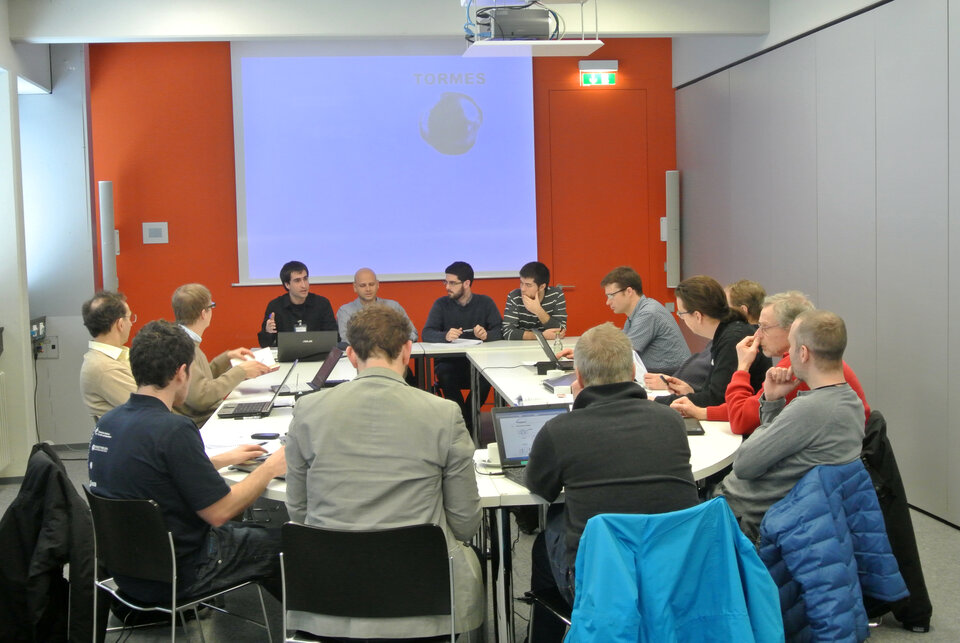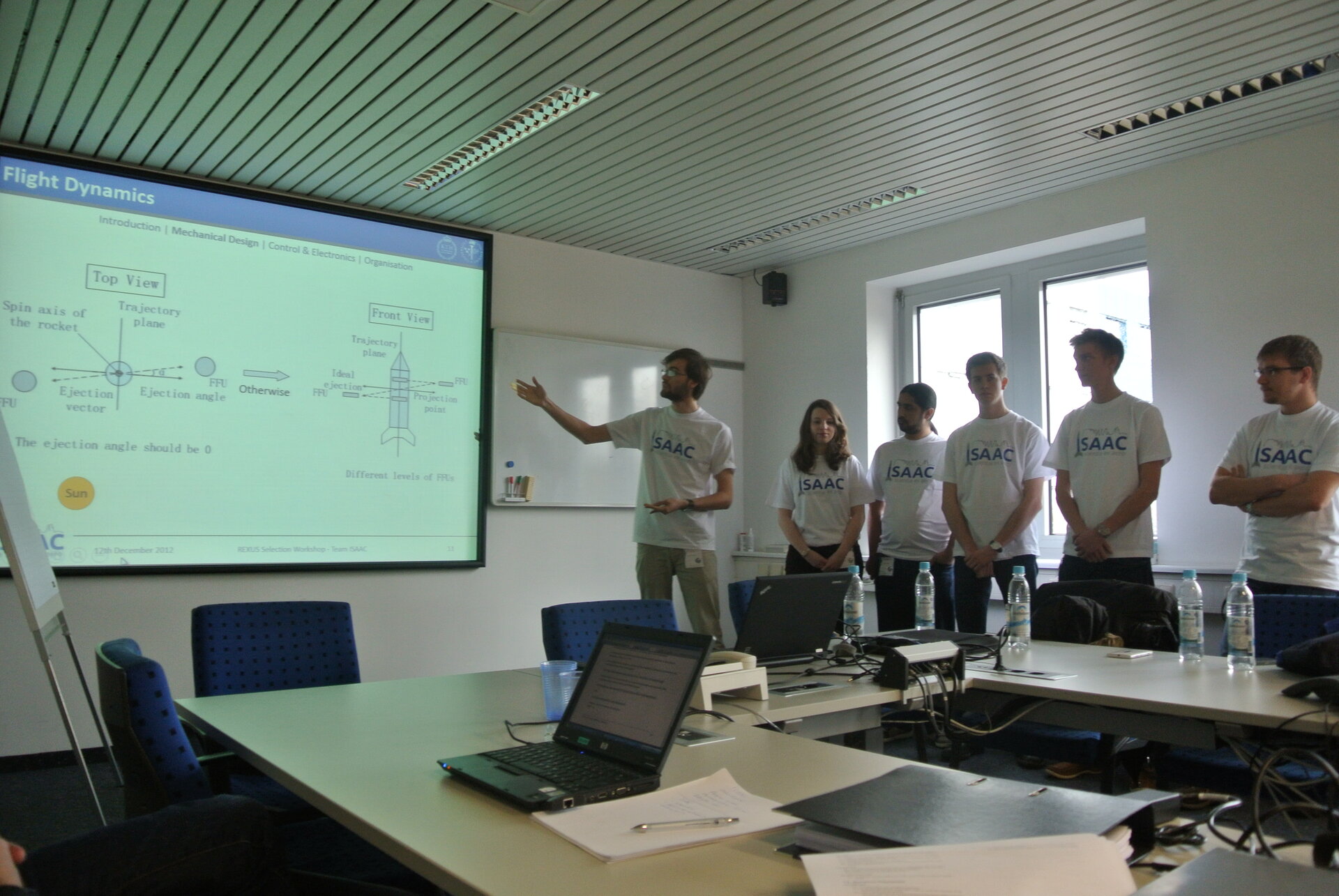Student teams gather for REXUS/BEXUS training week
Almost 60 science and engineering university students gathered in Munich between 4-8 February for an intense training week with space experts. The students are preparing experiments for the next REXUS/BEXUS launch campaigns.
REXUS/BEXUS stands for Rocket and Balloon Experiments for University Students. Each year, two rocket and two balloon launches carry up to 20 student experiments into the upper reaches of the atmosphere.
The students gathered at snowy Oberpfaffenhofen, Germany. The site belongs to the German Aerospace Centre (DLR) which leads the project together with the Swedish National Space Board (SNSB).
This site - home to eight scientific institutes - currently employs about 1500 people. This alone gave the students a glimpse of the professional world they could enter for their careers.
The teams come from across Europe. Twenty-four students were sponsored by ESA and SNSB to participate; twenty-four others were sponsored from Germany by DLR. An additional ten students were sponsored by other sources.
Each team was chosen last year to fly an experiment on the REXUS/BEXUS programme. The results may go towards their programmes of study, and can be included in their theses. ESA Education Office’s participation into the programme reflects ESA’s strategy to provide Europe with highly qualified scientists and engineers.
During the training week, the teams heard lectures about all aspects of the REXUS/BEXUS programme. These included topics such as scientific payload design, verification and testing, use of batteries and GPS in space, and atmospheric physics. Mechanical design aspects of the rocket and balloon platform were also covered. In short, they were told everything they need to know to design and build successful experiments.
Students also heard from their peers, teams Vector and BioDos, who flew their experiments on previous flights, offered advice and encouragement.

The students discussed their own projects, so that they could learn from each other which experiments they would be sharing their flights with. Then, they were toured around the DLR facilities. These included the ISS Columbus and Galileo Control Centre as well as the Robotics and Aerospace Centre.
Each team also attended a 1.5 hour Preliminary Design Review. Here, they presented their experiments to experts from ESA, DLR, SNSB and SSC. The experts offered help and advice to allow the students to complete their designs. These will now be assessed at the Critical Design Review (CDR) in the late spring/early summer.
Once past the CDR, the teams will build and test their experiments and complete integration and acceptance reviews before the launch campaigns at the SSC Esrange Space Center in Sweden. BEXUS 16/17 will fly in autumn 2013. REXUS 15/16 will fly in spring 2014.
The REXUS rocket reaches around 90 kilometres in altitude, and the experiments experience up to 3 minutes of miligravity. The BEXUS balloons take things more gently, ascending to around 30 kilometres and staying in the stratosphere for 2-5 hours.
On Thursday night, the students joined the celebrations at the Deutsches Museum Flugwerft Schleissheim. It was the 5th anniversary of ESA’s Columbus module being attached to the International Space Station. In attendance were two special guests: Spanish astronaut Pedro Duque, who has flown in space twice, and French astronaut Léopold Eyharts, who flew on the mission that delivered Columbus to ISS in 2008. The students had the opportunity to talk with them.

"The Training Week helped us understand the value of a space mission, get outstanding information from the specialists, the kind of knowledge that we don't receive in University and it was a lot of fun.” said the REXUS LOW-GRAVITY team.
"The iSEDE team found the student training week and preliminary design review a very valuable and enjoyable week of events. Lectures were engaging and interesting and the experts were extremely helpful and approachable. Discussing the project in detail with experts in terms of design and implementation gave us some very useful ideas to enhance our project. It was great to meet with the other student teams and see how our projects would integrate for the launch campaign. Coming away from this week, we look forward to developing the project from the experts advice and preparing for CDR and ultimately launch!"
Additional information:
The REXUS/BEXUS programme is realised under a bilateral Agency Agreement between the German Aerospace Center (DLR) and the Swedish National Space Board (SNSB). The Swedish share of the payload has been made available to students from other European countries through a collaboration with the European Space Agency (ESA).
EuroLaunch, a cooperation between the Esrange Space Center of SSC and the Mobile Rocket Base (MORABA) of DLR, is responsible for the campaign management and operations of the launch vehicles. Experts from ESA, SSC and DLR provide technical support to the student teams throughout the project.
REXUS and BEXUS are launched from SSC, Esrange Space Center in northern Sweden.




